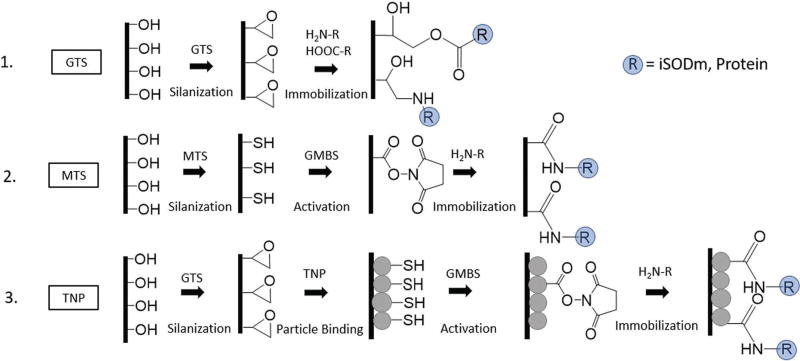Scheme 1.
Scheme of surface modification. (1) GTS surfaces. Smooth silicon and glass substrates are first activated then coated by a layer of epoxide containing silane. Epoxide modified surfaces are linked to amine/carboxyl containing antioxidant or protein via nucleophilic ring opening (GTS surfaces). (2) MTS surfaces. Smooth silicon and glass substrates are activated then coated with a thiol containing silane. Thiol groups are linked to amine containing molecules by an N-malaimidobutyryl-oxysuccinimide ester (GMBS) crosslinker. (3) TNP surfaces. Thiol coated nanoparticles are linked to the GTS modified substrate by carbonate catalysed ring opening to produce a roughened surface with thiol groups which can link to amine containing molecules via GMBS.

